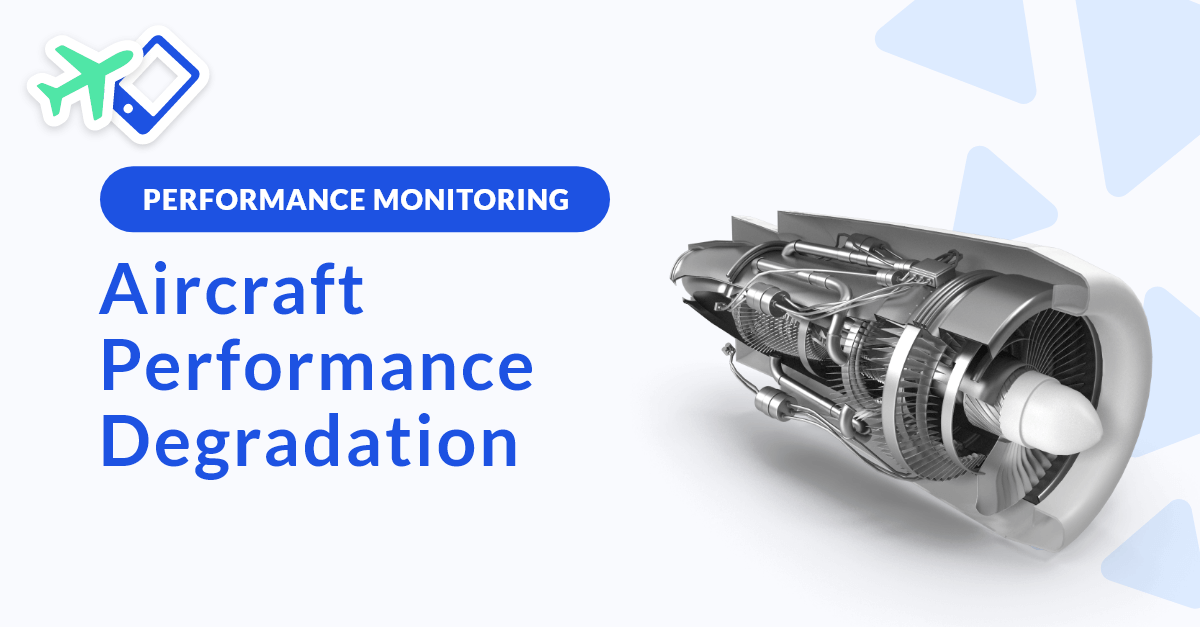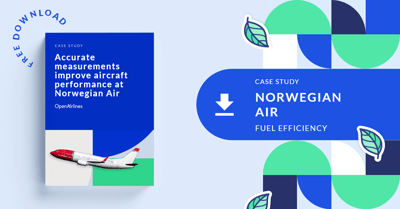How to monitor aircraft performance degradation accurately?
As an aircraft ages, its performance degrades. To put it simply: the older it gets, the more fuel it burns. Keeping track of this unwanted but inevitable evolution is critical for airlines to have a clear overview of their current fleet condition.
If you are an airline, monitoring your fleet health should be a top priority to ensure safety and increase fuel efficiency. This is where digital technology comes in.
Here, we'll dive into how Artificial Intelligence and Data Science can help monitor and analyze aircraft performance degradation.
Why monitor aircraft performance degradation?
The stakes of monitoring aircraft performance degradation are high. Beyond the obvious safety risk, any degradation with no corrective measure or maintenance action is a waste of fuel.
As we have now entered a global race to fight the climate crisis, airlines must address the carbon impact of their flight in any way possible while guarantying safety. This includes optimizing flight planning and maintenance.
Plus, fuel burn contributes to up to 30% of an airline’s direct operating costs on average. With current fuel prices at sky-high levels, overconsumption has a considerable impact on airlines’ cash flow.
In this context, monitoring the performance degradation of your fleet as accurately as possible is a prerequisite to running safe and efficient operations. By having up-to-date and accurate performance reports for each aircraft, operators can take corrective actions immediately instead of waiting for the next scheduled maintenance appointment. Additionally, ensuring the operations performance factors are up to date directly leads to better fuel efficiency and safety improvements.
How can digital technologies help?
Monitoring aircraft performance degradation involves collecting, manipulating, and analyzing a huge amount of data, which is often tricky due to the wide variety of aircraft types in the same fleet. Imagine how tedious and hazardous it is to retrieve data for one single aircraft manually; let us not mention a whole fleet! With no automation, it is a very time and energy-consuming process.
Digital technologies save a lot of time and effort by automating the gathering, manipulation, and computation of performance data from various sources (FDR records, operational flight plans, ACARS, etc.). The process is more reliable since there is no chance of manual errors, and all aircraft types and specificities are automatically integrated into the computations. No more hurdles caused by having a diverse fleet! Performance Engineers can focus on explaining the degradation rather than retrieving the information.
What specific insights can an Aircraft Performance Monitoring software provide?
Unlike a manual process that occurs occasionally, aircraft performance monitoring (APM) solutions continuously integrate data so that performance degradation can be observed almost in real-time. Such software brings agility to the performance and maintenance teams, which can quickly respond to aircraft degradation. Every analysis is based on fresh data, ensuring that follow-up actions are tailored to the actual aircraft's performance.
Another notion is data reliability. We already mentioned preventing manual errors, but there is more: sometimes, the data used for the analysis may be noisy or irrelevant. The APM software eliminates incorrect data, and the performance information is thus computed on clean data exclusively, increasing the overall accuracy.
The software also allows for more powerful computations of indicators than those done manually. For example, SkyBreathe® APM can distinguish between the performance degradation due to each engine and the airframe. Another example is the analysis of surface deflection, thanks to the flight data collected. Beyond indicators, it recommends the aircraft fuel factor based on the observed performance data and AI models. Such information is almost impossible to obtain without automation.
The software also alerts when a specific degradation is observed so the Performance Engineer can immediately spot a problem and save some precious investigation time. Their next challenge is to find the cause of the degradation. Some maintenance-related events, such as engine washes or changes, can sometimes be the source of the deflection. By integrating such data sources in parallel, the software can access all the information in the same place, making it easy for the user to connect the dots.
And in the end…
… Less time spent on aircraft performance degradation observation for better up-to-date analysis and root cause identification. Digital technologies are undeniably necessary to maintain an optimized performance monitoring process and, thus, efficient fuel planning.
LEARN MORE
[CASE STUDY] See how Norwegian leverages data analytics to improve its APM process.
>> Download the free case study



